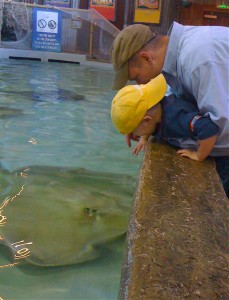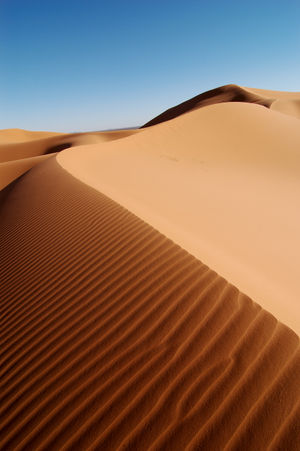
Fish, fish, everywhere fish! There are lots of different types and colors and varieties, and other organisms besides fish, too. How can your students learn some oceanography without getting bogged down in the diversity?
Here is a way to pull together a scientific study from a field trip to the aquarium! This method will work great for a co-op field trip or homeschool group, just designate a team leader for the brainstorming sessions and post-briefing.
Students going into an aquarium should first learn about some of the general factors which affect all life in the oceans. An excellent way to introduce these factors is by brainstorming them.
Many of the special characteristics of animals and plants in the water are already known to your students. What students may not have is a framework, or system, to help them think of the habitat of the oceans as a whole.
Choose a topic or a set of topics to study. The number of topics should depend upon your students, their ages and ability levels (not just reading level, but observational skills). Topics which can help students pull the study together are:
- Factors necessary for animal life at sea
- Currents and tidal effects
- Food chains
- Functions of plants in water
- Physical layout of the environment, etc.
This printable Aquarium Card will help your students pick out distinct facts which they will be able to use in discussion after the visit.
Brainstorming:
To brainstorm, the instructor should take time to talk and listen, then write down the ideas which come forth as a result of using leading questions.
A question like “What are some factors necessary for life in the oceans?” is asked of the students.
For animals to survive at sea they must be able to catch their prey, defend themselves or stay away from predators, recover from attack, and ensure the survival of some of their young.
More advanced answers may be: maintain a good balance under water, go up or down at will, maintain the right salt balance in their tissues so that osmotic pressure does not kill them, and find their mates in order to reproduce.
Another leading question might be: What do all animals in the sea have to do to eat?
Possible answers may be: Find the food, catch the food, identify food, process the food for digestion (biting, chewing, pulverizing, etc.), find the way back home, and many more.
What are some characteristics of the ocean environment?
The physical environment of the oceans consists of a lighted surface where the atmosphere and ocean meet, a surface where the ocean meets the ground beneath, many different surfaces at the edge of the water, the completely watery environment (called pelagic), tides, upwellings, and currents. The limited number of environments allow the student to compare two or more of them without getting bogged down in detail.
What sorts of food chains exist in the ocean?
All food chains have certain elements: A plant base which uses photosynthesis to make food, primary and secondary consumers, and decomposers. Food chains usually have multiple elements like different types of plants, and many interchangeable consumers. Food chains consist of more primary consumers than secondary consumers. There are generally few large predators in an environment. The use of food chains in ocean study also limits the range of topics to something manageable within the aquarium.
Do not stifle your children’s creativity, but encourage them to think of appropriate answers. Your goal is to get the children to generalize.
The ideas you write down should be used in the pre-briefing, in the aquarium, and in the post-briefing to pull together the facts they learned at the aquarium.
Pre-briefing:
Print out the Aquarium Card onto cardstock for your students and have them write their names on the card.
Older students should bring a clipboard or notebook on which to record the answers. Consider taking along a digital camera for their use as well.
For younger students, you may wish to tie the card on your child’s wrist by a ribbon or some yarn laced through a hole in the card. Print or copy their version of the Aquarium Card (same file) onto colorful cardstock. Your child can dictate answers to you as you go through the aquarium or write them in a notebook if they are old enough to do so. If you use the digital camera to capture what they describe, it would make a fun and informative slideshow when you return. Also, iPhone voice memo, anyone?
Remember, before going to the aquarium discuss some of these concepts with your students so that they are prepared for the diversity of the aquarium.
In the aquarium:
Ask them to take a limited number of notes on the limited number of the topics you brainstormed with them. Remember to keep the number of topics age-appropriate! You should not try to take in all subjects in an aquarium!
Post-briefing:
After the visit, debrief the students. Reinforce the topics your students researched by discussing them and by reporting on paper.
When your students finish their report, have them attach the notes they took both before and during the visit. If you have a younger child doing this activity, you could use their Aquarium Card and any photos in a lapbook report format.



